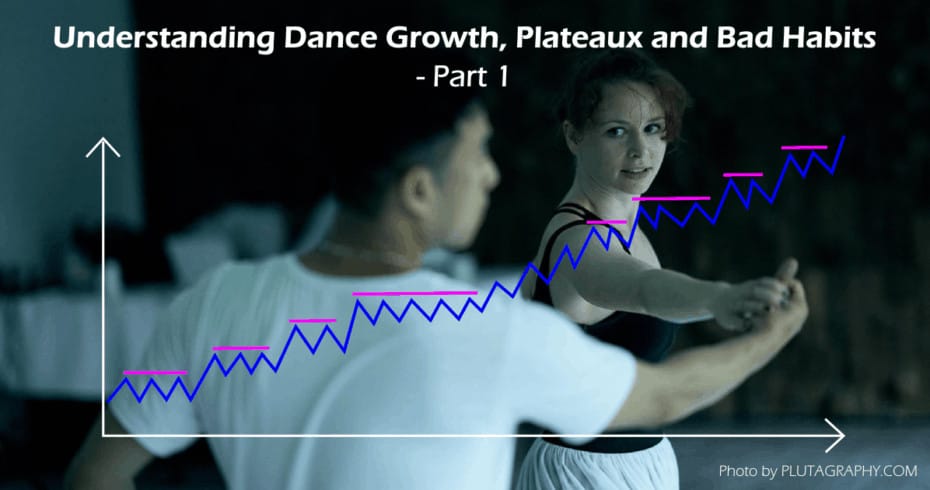Introduction
One area that I feel has very little attention in Brazilian Zouk teaching is the setting & managing of progression expectations versus time frame in learning Brazilian Zouk (especially if you’ve never danced before).
I hope when you’ve finished reading this blog, it will not discourage you from taking up (or giving up Brazilian Zouk if you have already started) but instead, provide you with an understanding that learning to dance is a very long and continuous journey that requires much time, effort, dedication, and study.
If you stick to it, in return, it will empower you with one of the greatest gifts; the power to connect and communicate with people beyond words could describe. The journey you embark is a lot of fun and comes with constant challenges, which is one major factor why we do it!
To help explain my experiences and perspective of how dance growth works, I’ve created graphs. These graphs are for illustrations purposes only and do not contain any real metrics. It should help you think about how your body and mind perform in processing dance information on the go.
This does not factor how much knowledge and understanding you know of dance. For clarity, how much you know of dance is not the same as having the ability to apply it into your dance. These are two different things, knowledge comes from studying and the ability to apply comes through practice.
One major positive influence on your dance growth in learning Zouk is if you are proficient in many other dances, especially another social dance that you had built a good solid dance foundation on.
In this series, you will find 3-parts:
Part 1:
- Dance growth is not linear.
- What are dance plateaux?
- The forever dance plateau.
- Picking up bad dance habits & incorrect techniques.
- Becoming worse than when you’ve started out.
- Building a dance solid foundation.
- Special bonus for reading this far.
- Final Words.
Dance growth is not linear.

Learning to dance is certainly not a smooth ride. Graph 1 illustrates your progressions going up and down constantly.
To improve in dance, it’s about teaching your body, mind and emotional energy to work musically and executing the techniques correctly & safely.
Another important aspect is training and developing the correct muscle groups required for balance and executing dance movements. This includes precisely coordinated motor actions by conditioning your body to respond to both conscious and sub-conscious decisions.
You will have days where you feel that it’s getting better and days you feel like it’s getting worse. This is normal as you are learning to apply dance concepts that your mind & body is unfamiliar with. Just keep at it!
What are dance plateaux?

Graph 2 shows that we are constantly facing dance plateaux and it’s the obstacle that blocks us from improving.
Regular practice is required for you to overcome every plateau and reaching new heights with your dance.
Unfortunately, irregular practices will not get the same results because we all should know that learning enforcement comes through regular use of motor action with controlled intents.
As my general rule of thumb, I only count a minimum twice a week of 1+ hour classes or self-routine practices as a regular practice. Anything less is irregular.
The forever dance plateau.

As a dancer, graph 3 shows one position that I would never want to be stuck in. This usually happens when dancers start learning for the first couple of years, then they stop going classes or practicing.
The dancers at this forever plateau stage are usually by choice because they have found their comfort zone or have life priorities other than dance. They generally enjoy just social dancing and may attend a class once in a blue moon.
What happens if you hit what feels like a forever plateau even when regularly attending class or practice? This can happen, here are a few suggestions that may help you break it:
- Take a short break from dancing. You may have exhausted yourself and need a break to come back fresh!
- Go to a Brazilian Zouk congress, festival or marathon. This is very subjective and I found that it works flawlessly whenever I hit a plateau. My aim isn’t the classes but to enjoy the atmosphere of being surrounded and motivated by other passionate dancers. It’s like absorbing their energy! My main focus would be relaxing and enjoying social dances.
- If what you keep doing isn’t working, you may need to try something else or do things differently (sounds obvious!). You may have grown beyond what the teacher is capable to teach, or, their method isn’t effective on you any longer. This is another reason why it’s worth learning from as many different teachers as possible.
- One of the major cause of plateau is poor dance foundation and techniques. This will ripple and will be more noticeable as you progress in your personal dance development. A solution? If it gets too frustrating, then seek professional dance advise from multiple reputable international teachers to pinpoint the problem areas.


This is so true.. learning in dance is continuous thing.